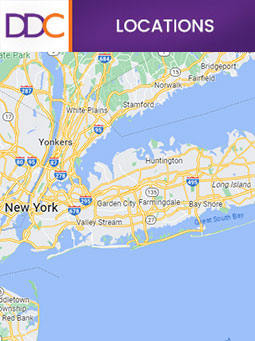Gallstones Treatment Specialist Q&A
Gallstones are lumps of solid material that form in your gallbladder. They are made when the digestive juice called bile gets hard and stone-like. Visit Digestive Disease Care to get comprehensive and specialized care. For more information, contact us today or schedule an appointment online. We have convenient locations to serve you in Babylon NY, East Setauket NY, Forest Hills NY, Jamaica NY, Jericho NY, Lake Success NY, Melville NY, Mineola NY, Massapequa NY and New Hyde Park NY.


Table of Contents:
What are gallstones?
What causes gallstones?
How are gallstones diagnosed?
How are gallstones treated?
Up to 15% of Americans have gallstones — hard deposits of cholesterol that form in your gallbladder. In many cases, gallstones don’t cause symptoms, but they can cause pain and other issues when they block your bile ducts. The board-certified gastroenterologist at Digestive Disease Care diagnose and treat gallstones at their New York offices in Babylon, Lake Success, East Setauket, Mineola, and Jericho in Long Island, and Forest Hills and Jamaica in Queens. For expert gallstone treatment, call Digestive Disease Care or schedule a consultation online today.
Gallstones are hardened deposits of either cholesterol or bilirubin and calcium salts that form in your gallbladder. Gallstones range in size — some as small as a grain of sand and others as large as a golf ball. You might have one large gallstone, a mixture of several large and small stones, or hundreds of tiny gallstones.
Common signs of gallstones include:
• Pain in the upper right side of your abdomen
• Nausea and vomiting
• Dark urine
• Clay-colored bowel movements
• Diarrhea
• Indigestion and burping
• Yellow eyes or skin (jaundice)
Fatty or fried foods might aggravate your symptoms. A flare-up of symptoms usually only lasts a couple of hours. Gallstones can lead to severe complications when left untreated, so you should make an appointment at Digestive Disease Care if you have any of these symptoms.
Gallstones form when you have too much cholesterol or bilirubin in your bile. Cholesterol is a fatty substance produced by your liver to help your body make hormones, and vitamin D. Bilirubin is a waste product produced when your liver breaks down old red blood cells.
Your risk of developing gallstones increases if you:
• Are overweight
• Have a high-fat diet
• Lose weight rapidly
• Have diabetes
• Have cirrhosis
• Take cholesterol-lowering drugs
A family history of gallstones makes it more likely you will develop the condition. Your risk of gallstones also increases with age.
In addition to a physical exam, the board-certified gastroenterologist at Digestive Disease Care use blood tests, ultrasound, CT scans, and endoscopic retrograde cholangiopancreatography (ERCP) to evaluate your gallbladder. ERCP combines X-rays with endoscopy to examine the tubes that drain your gallbladder, liver, and pancreas.
After assessing your condition, your physician discusses your treatment options with you and answers your questions to help you make the best choice for your health. If your problem is mild, your doctor might recommend adjusting your diet to cut down on fat and extra cholesterol and monitoring your gallbladder to see if the stones increase in size or number.
If you have large gallstones that block your bile ducts, your doctor might recommend shockwave lithotripsy or surgery to break up or remove your gallstones. Advances in minimally invasive surgery techniques have made gallstone removal a standard procedure.
If you’re concerned about gallstones, call Digestive Disease Care, or make an appointment online today. We have convenient locations to serve you in Jamaica NY, Melville NY, New Hyde Park NY, Forest Hills NY, Jericho NY, Mineola NY, Lake Success NY, Babylon NY, East Setauket NY, Massapequa NY and BEYOND.

Additional Services You May Like

Additional Services You May Like
- Abdominal Pain
- Acid Reflux
- Barretts Esophagus
- Bloated Stomach
- Capsule Endoscopy
- Celiac Disease
- Colon Cancer Screening
- Colonoscopy
- Constipation
- Crohns Disease
- Diarrhea
- Diverticulitis
- Esophageal PH Monitoring
- Fatty Liver
- Fibroscan
- Gallstones
- Gastroenterologist
- Gastric Chest Pain
- Gluten Intolerance
- Hemorrhoid
- Hemorrhoid Banding
- Hepatitis
- Irritable Bowel Syndrome
- Lactose Intolerance
- Pancreatitis
- Polyps
- Rectal Bleeding
- Stomach
- Ulcerative Colitis
- Urgent Care






